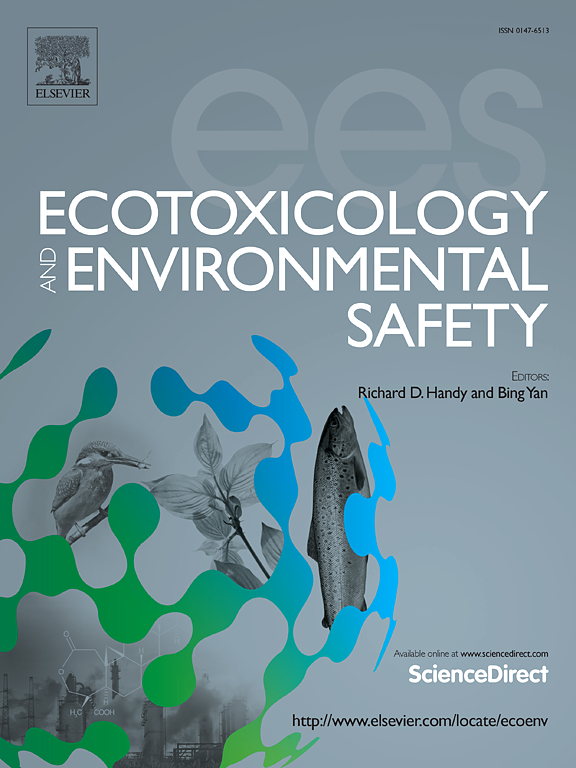AFB1 exposure promotes SIV replication and lung damage via RIG-I- and p38-mediated RETREG1/FAM134B-dependent endoplasmic reticulum autophagy
IF 6.2
2区 环境科学与生态学
Q1 ENVIRONMENTAL SCIENCES
引用次数: 0
Abstract
Aflatoxin B1 (AFB1) contamination is common worldwide and highly harmful to humans and animals. Our previous studies suggested that AFB1 exposure promotes the replication of H1N1 swine influenza virus (SIV). However, its mechanism is not clear. Here, TCID50, qRT-PCR, and WB assays were used to detect SIV replication, after which proteomic detection was used to screen key proteins and pathways. Thirty piglets were subsequently randomly divided into 6 groups. The low-pathogenicity SIV was inoculated to establish a piglet model of SIV infection. Different doses of AFB1 were administered daily to SIV-infected piglets for 14 d. The in vitro results revealed that 0.02–0.04 μg/mL AFB1 markedly promoted SIV replication. Proteomic analysis revealed that reticulophagy regulator 1 (RETREG1/FAM134B) and p38 signaling were markedly upregulated, whereas RIG-I signaling was significantly downregulated. The above results were confirmed by qRT-PCR and WB assays. Transmission electron microscopy was used to further prove that AFB1 promoted endoplasmic reticulum autophagy (ER-phagy) in SIV-infected PAMs. RIG-I activator and p38 inhibitor reversed the upregulation of RETREG1 and AFB1-promoted SIV replication, and RETREG1 inhibitor reversed the AFB1-promoted SIV replication. In vivo experiments confirmed that AFB1 upregulated RETREG1 and p38, downregulated RIG-I, and promoted SIV replication and lung damage. Taken together, our results reveal that AFB1 promotes SIV replication and lung damage via RIG-I- and p38-mediated RETREG1/FAM134B-dependent ER-phagy and suggest the therapeutic potential of RETREG1-, RIG-I-, and p38-related drugs for influenza. Our findings also provide insights into why the occurrence of other infectious diseases is increasing.
求助全文
约1分钟内获得全文
求助全文
来源期刊
CiteScore
12.10
自引率
5.90%
发文量
1234
审稿时长
88 days
期刊介绍:
Ecotoxicology and Environmental Safety is a multi-disciplinary journal that focuses on understanding the exposure and effects of environmental contamination on organisms including human health. The scope of the journal covers three main themes. The topics within these themes, indicated below, include (but are not limited to) the following: Ecotoxicology、Environmental Chemistry、Environmental Safety etc.

 求助内容:
求助内容: 应助结果提醒方式:
应助结果提醒方式:


